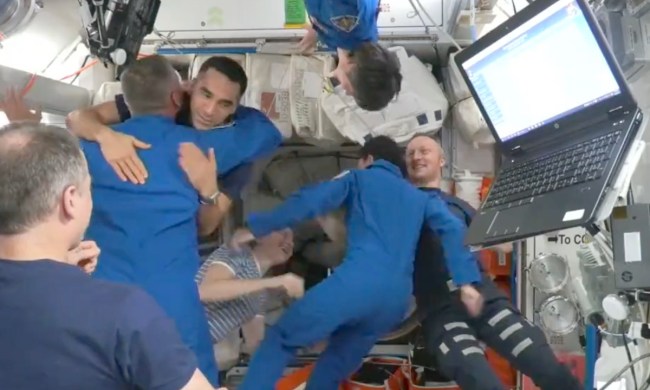The European Space Agency (ESA) has released an incredible video showing a timelapse of the launch of the Russian Progress MS-10 cargo spacecraft on November 16 — as seen from space. ESA astronaut Alexander Gerst, who is currently aboard the International Space Station (ISS), took the images of the Progress launch as seen from high above Earth’s atmosphere, and created a video that Hollywood special effects studios would envy:
The launch of the Progress spacecraft was part of a refueling mission for the ISS, delivering food, fuel, and supplies to the astronauts on board. The craft took off from the Baikonur cosmodrome in Kazakhstan atop a Soyuz rocket. In the video you can see key moments in the launch, like the separation of the rocket booster at 00:07, the Core stage separation at 00:19, the Progress spacecraft separating from the rocket and entering orbit at 00:34, and the Core stage falling back to Earth after using up its fuel and burning up in the atmosphere at 00:36.
To escape the atmosphere and reach the ISS, the rocket has to climb 400 km (249 miles) from the surface of the Earth and has to match the speed of the ISS, which moves at 28,800 km per hour, or nearly 17,900 miles per hour. All of this had to be achieved while carrying 5,653 pounds of cargo including over 1.650 lbs. of propellant, 165 lbs. of oxygen and air, and 116 gallons of water.
The images were captured using a camera set to take images at regular intervals, and the images were then played back at eight to 16 times the speed to create the video. So the minute and a half of time-lapse footage represents around 15 minutes of actual time. The camera used is part of the Cupola module of the ISS, an observatory module that has seven large windows around a small interior space which allows the astronauts aboard to observe nearby space events. Viewing windows in space stations are tricky because they need to withstand the extreme pressure and temperature differences between the inside of the station and the cold vacuum of space. This is why the 31-inch window of the Cupola is the largest window ever used in space.



